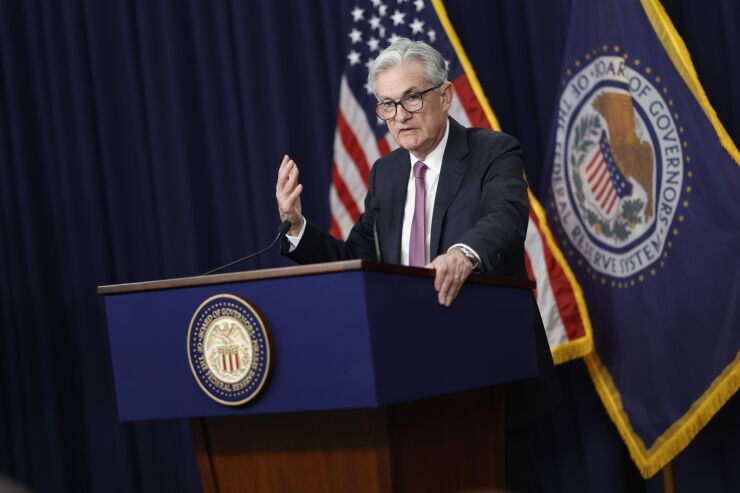
WASHINGTON — Federal Reserve Chair Jerome Powell dismissed calls for the central bank to better separate its
During an event held at the Fed's headquarters on Friday morning, Powell said the tools for managing the two responsibilities — while different in intent — ultimately work toward the same end goal. Further divorcing them from one another is neither possible nor desirable, he said.
"Our tools can have separate objectives, but their effects are often not entirely independent. The tools are complementary almost all the time because financial and macroeconomic stability are so deeply intertwined," he said. "In fact, our consensus statement notes that sustainably achieving maximum employment and price stability depends on a stable financial system."
Powell's remarks come amid growing criticism of the Fed's handling of monetary policy — keeping rates low through rising inflation in 2021 then rapidly tightening them last year — and its impact on banks. The failure of Silicon Valley Bank, driven largely by paper losses on its Treasury securities portfolio, brought the issue into the spotlight.

Powell pointed to the immediate aftermath of Silicon Valley Bank's failure and the Fed's use of emergency liquidity provisions, including the discount window and the newly created bank-term funding program. He said those tools helped support the banking system without disrupting monetary policy and, ultimately, he expects the two efforts to be complementary.
"While financial stability tools help to calm conditions in the banking sector, developments there, on the other hand, are contributing to tighter credit conditions and are likely to weigh on economic growth, hiring and inflation," he said. "So, as a result, the policy rate may not need to rise as much as it would have otherwise to achieve our goals."
During the event, Powell also emphasized the importance of transparent communication by the Fed. He noted that giving clear guidance not only helps market participants brace for changes to monetary policy, it also bolsters the legitimacy of the Fed and is a necessary tradeoff for the amount of independence it enjoys.
Powell said that earning the public's trust is more difficult than ever, citing polling numbers that show a waning belief in government officials.
"We're an institution that serves a critical public mission, but to be here and work here is to know that the particulars of what we do and how we do it are not generally top of mind for most people," he said. "On top of that, we have a critical, rare grant of independence, and all of that, to me, means that we have a special obligation to explain ourselves clearly, what we do and why we do it."
Powell said it is always possible for the public to misconstrue the policies the Fed communicates, but he does not believe that is the case for market projections of a rate cut later this year — a move that is contrary to the Fed's own expressed expectations.
"I would say that that disconnect does not seem to reflect the misunderstanding of our action or a lack of belief that we will do what's necessary to bring inflation down," Powell said. "But, rather, it appears to be simply a different forecast, one in which inflation comes down much more quickly than the [Federal Open Market] Committee participants think is most likely."




